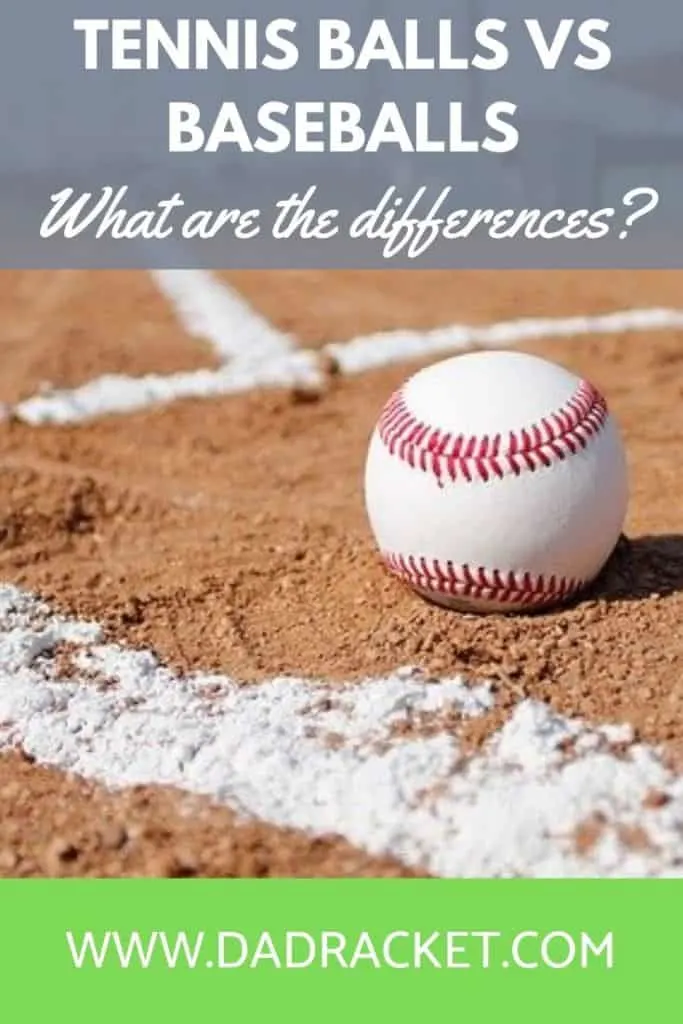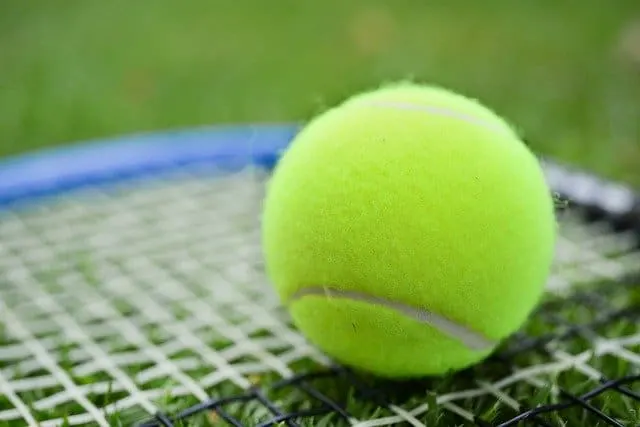
These days I don’t really follow American sports that much.
Apart from tennis, I’m a big Aston Villa fan (unfortunately, my team has been poor for many years now).
They’re a football team based in the Midlands in the UK in case you didn’t know…
However, from 2007-2009, I did live in the US for two years and I remember getting swept up in the euphoria of the Superbowl for American football…
…and the World Series in baseball.
I find it surprising that it’s a best-of-7 event, rather than just a one off final but it can make things interesting.
Another aspect I find surprising is how far players can hit the baseball when they make a great connection.
The ball flies so far!
I thought for this blog post, I’d compare a tennis ball and baseball and talk through any differences between them.

What’s the difference between a tennis ball and a baseball?
A quick glance at a baseball and a tennis ball reveals some obvious differences. We can see baseballs are bigger, both are quite light and they are different colours.
Let’s look at things in more detail.
What are they made of?
A baseball is made of several different layers. The centre of the ball is made of solid cork which is wrapped in two layers of rubber. This is known as the “pill”. Outside this core, various layers of yarn are tightly wound around the pill at a high tension.
What’s striking about using yarn, is not the material itself, it’s the amount used.
369 yards!
Not only does this make a good question for a pub quiz, it goes to show that there is a real science to making a baseball.
Outside the yarn, everything is coated in rubber cement and finally covered in white cowhide. This outer covering is held together with 216 stitches (88 inches of red cotton thread).
Tennis balls don’t have so many layers compared to a baseball. They feature an outer felt covering, with a hollow rubber core inside filled with pressurized air.

What colour are they?
Baseballs are a white colour. Undoubtedly this probably helps players see the ball clearly, especially when a pitcher is hurling the ball towards the batter at great speeds.
Tennis balls are bright fluorescent yellow, although they used to be white. Apparently a big reason for the switch was that the white ball was hard to spot on colour televisions when they became popular in the 1970s.
What size is a tennis ball and a baseball?
Under the official rules, as baseball should be 229-235 mm in circumference and 73-76 mm in diameter. In tennis, the ball should have diameter between 6.54-6.86cm.
So a baseball is slightly bigger in size compared to a tennis ball.
How much do they weigh?
Tennis balls should weigh between 56.0-59.4 grams (1.975-2.095 oz). Baseballs are just over twice the weight of tennis balls, weighing between 142-149 grams (5 and 5.25 oz).
Not only do baseballs have more layers of material than a tennis ball, one of the main reasons for the weight difference is the core of the tennis ball is full of pressurized air, where as the baseball has a solid core.
Do they both float?
Both baseballs and tennis balls float on water. Although the tennis ball is lighter, with a hollow core, the very centre of the baseball is made of cork, which is very light and a positively buoyant material.
How high do tennis balls and baseballs bounce?
Skip to 1:57 to see a baseball bouncing, and 2:48 for a tennis ball.
As you can see, a tennis ball bounces higher than a baseball, roughly half of its height if it lands on a hard surface. A baseball bounces to around a quarter of its height on a hard surface.
Tennis balls vs baseballs – Which can you throw faster?
I don’t know which of these can be thrown faster. However, if we take into account using a racket for tennis, and a bat for baseball, the tennis ball wins.
During a serve in the men’s game, the likes of John Isner and Ivo Karlovic can hit the ball as fast as 150mph.
In baseball, the best pitchers will do well to reach 100mph in Major League Baseball.
